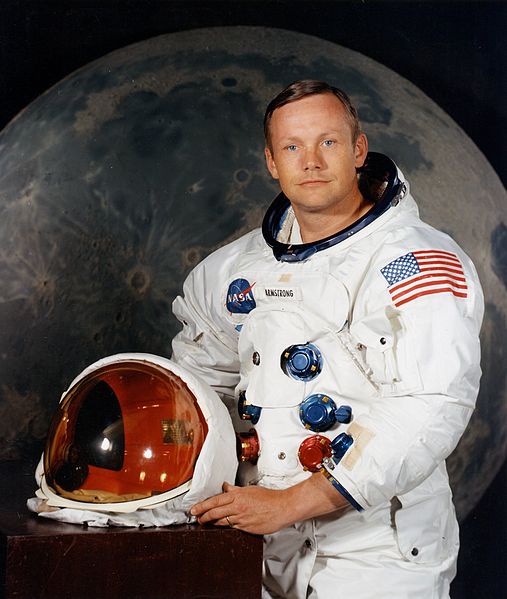Neil Armstrong

Neil Alden Armstrong, the first human to set foot on another world, is dead. He was a remarkable man who inspired millions, yet tempered his achievements with extraordinary humility. He underwent heart surgery on 7 august, just 2 days after his 82nd birthday, and succumbed to complications earlier today. Like the footprints he left on the Moon forty three years ago, his name will live on forever.
Neil was born in 1930 in the little town of Wapakoneta, Ohio. He grew up steeped in local pride of the Wright Brothers, who had lived in nearby Dayton, and cemented a love of flying by having his first flight at the age of six. He took flying lessons while in high school and earned his pilot’s license by age sixteen. After graduating, he won a navy scholarship to study aeronautical engineering at Purdue State University, but his studies were interrupted when he was called up to serve in the Korean war in 1949. As a fighter pilot, he flew 78 missions. He retired from military service in 1952, to resume his studies. Shortly afterwards, he joined the National Advisory Committe for Aeronautics, where he worked in many roles including test pilot and engineer. In 1962, Neil joined the astronaut program. His first space mission was Gemini VIII, when he and crewmember David Scott performed the first ever docking maneuver with another spacecraft. The capsule suffered technical issues, and he had to manually intervene to recover from an uncontrolled spin, and guide the capsule to an emergency splashdown in the pacific ocean.
On May 8 1968, he was almost killed in an Apollo training accident, when a Lunar Landing Training Vehicle suffered a control failure and banked uncontrollably. Only his quick reflexes allowed him to eject in time. A little over a year later, on July 20 1969, he earned his place in history by landing the Eagle in the Sea of Tranquility on the Moon, and then stepping outside with the immortal words “That’s one small step for (a) man, one giant leap for mankind”. He never flew in space again, leaving NASA in 1972, and later buying a farm and trying to avoid the limelight, although he did continue to teach aerospace engineering at the University of Cincinatti until 1979.
He was something of a contradiction – as a fighter pilot, test pilot, and astronaut, he was the sort of ultra macho figure described by Tom Wolfe’s The Right Stuff. Yet he attached no particular value to these things, preferring to emphasize his intellectual and engineering achievements. In a February 2000 appearance, he said “I am, and ever will be, a white socks, pocket protector, nerdy engineer, and I take a substantial amount of pride in the accomplishments of my profession.” He was intensely private, and tried to avoid the fame and adulation he earned as captain of Apollo 11. When asked how he felt about the permanence of his historical footsteps on the Moon, he simply remarked that he hoped somebody would go up and clean them up on day.
It was this humble approach to life that made him so remarkable. Many people have taken great steps to advance humanity. But few would complain that they would prefer to be remembered for the aggregate of their life’s work, rather than one brief firework moment.
